Well, it’s almost – finally – almost done.
The New Coop, which I’ve been working on for the past month or so as time – and weather – allow. Over the weekend, I finished up the nesting boxes, which project from the rear wall – so as to enable getting eggs without getting my feet full of the mud and muck that the chickens (and ducks) inevitably create in the run.
That was a mistake I made the first time – with the prior coop. To get eggs, you had to enter the coop – which was enclosed within the run. That meant waking through the muck and mud, no fun – and much mess – especially after it had rained for a few days.
Lesson learned.
Now I’ll be able to collect eggs without collecting mud. Just walk up to the rear of the coop – and raise the hinged lid to access the eggs. If you are considering getting some chickens – in order to have some eggs – I strongly recommend designing accessible nesting boxes that allow you to get the eggs without having to go in the coop, itself. No matter how hard you try to keep it clean, the chickens (and ducks, if you’ve got ’em) will make sure you don’t.
These bird don’t roost- as chickens do – because they can’t. Webbed feet make that difficult. They like to nest on the ground – which creates an issue when you house ducks with chickens, which roost – above the ducks. Perhaps you can see where I am headed. Or, rather, what will be headed the ducks’ way – from above – if you don’t devise a poop sluice or similar, to prevent the ducks from being anointed each night by the roosting chickens.
My solution was to devote the far side of the coop to the chickens, with the floor area reserved for the ducks – with a poop sluice mounted to catch any wayward emissions. The sluice being a piece of leftover siding, mounted at an angle underneath the perch. There will also be a covered area above the ducks’ area.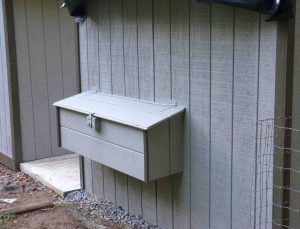
The other feature of this coop that is the result of lessons learned – the hard way – is the pair of outward-opening barn-type doors that provide total access to the interior, which can be easily and quickly cleaned as a result. This is a job you will have to do fairly regularly – see above points regarding the dirtiness of these birdies – so being able to do it with less effort and faster makes having the birds more enjoyable and that is no small thing. The goal – my goal – was to have renewable food right here, at home – without it becoming a hassle.
So – if you’re thinking about doing something like this – think about how you’ll clean what you end up doing!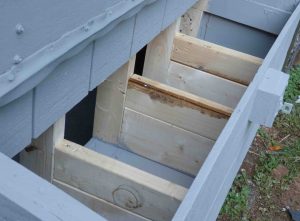
As I detailed in prior accounts about this project, I also decided to build this coop as if I were building a house – on concrete, framed (4x4s) to be sturdy and durable; something that will not have to be rebuilt in two or three years. I probably over-built this thing. It should stand as long as the house – and because it is properly built and looks nice, it will be an asset to the house – important in the event I ever decide to sell it.
This is another important point. If you build a coop – if you build anything on your property – it is worth building it such that it does not detract from your property. A shack is a deterrent to future prospective buyers – and regardless, you’ll regret building a shabby-looking, leaky eyesore.
The one thing yet to do, in terms of the physical structure, is the roof. Which I am waiting to do until I can get my buddy Joe the Roofer to come over and help me with it. I could probably do it myself, but why risk it when a professional is available? Trust me when I convey to you that – above all – you do not want a leaky coop. If you get drips, you will have have soggy, nasty bedding. The wood will rot. It will smell. It will decay, rapidly.
Plus, leaving aside keeping things dry, I want this to look good – not cobbled together. I designed the coop to look as though it had been built at the same time my adjacent shed was built. It has exactly the same siding, the same trim and paint – and the same pitch, to its roofline. It will be roofed with the same tin that roofs my shed and – when complete – the whole thing should look (as Elvis used to say) as if it had been meant to be.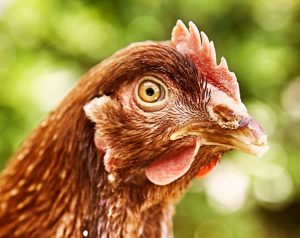
There are still a few odds and ends to finish up, including running electricity to the coop, for lights and outlets for heaters, etc. (if you live in an area that is subject to cold weather, this is a must – unless you want frostbitten birds and frozen-solid eggs). Also, I haven’t yet built the feeder system, which will be made of PVC pipe – and the watering system, which will feed off of runoff rain collected in a barrel.
I’ll have more about that, once it’s all done!
. . .
Got a question about cars, Libertarian politics – or anything else? Click on the “ask Eric” link and send ’em in! Or email me at EPeters952@yahoo.com if the @!** “ask Eric” button doesn’t work!
If you like what you’ve found here please consider supporting EPautos.
We depend on you to keep the wheels turning!
Our donate button is here.
If you prefer not to use PayPal, our mailing address is:
EPautos
721 Hummingbird Lane SE
Copper Hill, VA 24079
PS: Get an EPautos magnet or sticker or coaster in return for a $20 or more one-time donation or a $10 or more monthly recurring donation. (Please be sure to tell us you want a magnet or sticker or coaster – and also, provide an address, so we know where to mail the thing!)
My eBook about car buying (new and used) is also available for your favorite price – free! Click here. If that fails, email me at EPeters952@yahoo.com and I will send you a copy directly!


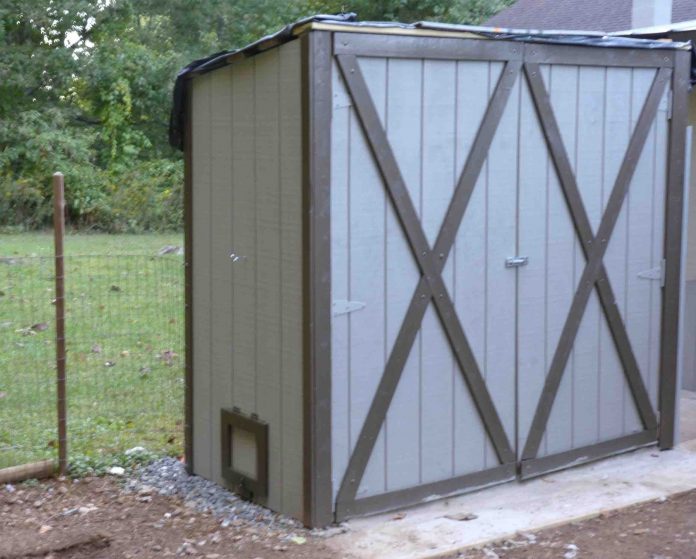

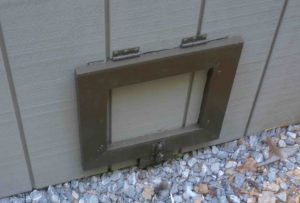









Eric,
Egg…cellent work! That’s no yoke!
Seriously…well done and looks good.
Eric,
What are your thoughts on urban/suburban chickens?
I am in the process of buying a house. The yard is very small, but there is an area in the back that appears to maybe have been used as a chicken run at one time. I suspect that roosters might annoy the neighbors, so they are probably right out. I don’t know how much space each animal needs, I am guesstimating that 2-3 hens is probably max feasible.
Could this be a cost-effective setup? I sometimes have to be gone for up to a week at random times, I am worried about feeding them regularly (can I give them extra feed like a cat who will still have some left, or are they like a dog who eats everything right away, leaving himself nothing for the next day?). Also wondering how long they will keep laying.
Perhaps beekeeping might be lower maintenance. Perhaps I can do both.
Hi Publius!
Suburban chickens are very doable – provided there’s no rooster! A small flock of say 2-3 birds is easy to keep; you can buy/build a little hutch for them that can incorporate a wire-mesh walk-about area that is secure from predators and allows the birds to move around. Some of these look like mini-barns or doll houses and are very cute (important if you have a wife/GF). Chickens don’t need much space – just shelter and a place to lay (appx. 1x1x1 for the laying boxes – and you don’t need one for each bird – they will share. They do need a rod or similar to roost on at night).
Hens are usually pretty quiet by themselves – though they will cluck when they lay, to announce the fact! A 50 pound bag of appx. $15 feed should keep them fed for two months, especially if you supplement with table scraps and allow them to wander the backyard. You can use PVC pipe to rig up an “auto feeder” that will enable you to not have to worry about keeping them fed for days at a time; same with the water. You can buy a gravity-feed waterer that holds several gallons that will automatically top-off the (circular) trough. They sell these at Rural King, Tractor Supply and so on.
They should give you a couple of eggs every day in return! Plus the fun of having them around. They are fun to watch!
Still hoping to see pictures of your girls Eric. If you don’t make the fence any higher they might end up in your backyard. There is always one brave chicken who gets out and tries to lead the others to freedom. And just like we humans the majority of the flock shuns and ignores that free spirited bird, even though they can clearly see the green grass on the other side of that fence.
Hope you and your lady enjoy watching them do their thing. We watch ours from the deck, throwing a stale roll, or overripe tomato on the ground they never cease to entertain playing their version of chicken football. Hornworms and lizards, thrown out before the evening scratch, make for an even moar entertaining spectacle.
Do most electrical power plants generate electricity from natural gas? Higher prices in store for that, too, I guess.
Supply chain disruptions I’ve noticed: the mower shop has been waiting three months for a shaft for a weed eater, they waited three weeks for mower blades direct from the factory of the company they represent, the generator I needed took three weeks to arrive.
That nesting box, it looks to me like it needs a 2×4 across the bottom to keep nesting material from falling out, idk. I used the scalloped part of a pallet 2×4 and I think mine is too short to stop enough material from falling out. I may have to fix that.
On one of my nesting boxes, which are wooden removable crates built out of pallet wood, I used a 3/4″ drill bit to put holes all over the bottom so fine particles can fall through. I did this on recommendation of that chicken guy online, I forget his name, the one with the chicksaws. He uses modified plastic milk crates as nesting boxes, I very much like that idea but I don’t have any of those laying around, plenty of pallets though.
He mentioned how it was important to have holes in the bottom of nesting boxes so fine material can fall through. I don’t know -how- important that is.
On the rest of my wooden nesting boxes I made slats with gaps for stuff to fall through, it was easier than drilling. I’ll see how well that works.
Brandonjin asked how you learn to do this stuff. I learned from others, and by just jumping in and doing it, and from taking shit apart, especially demolition projects. One older book I liked which is kind of common at thrift stores for 50 Cents is, ‘Build it Better Yourself’.
My next project is to build a chicken yard/run. Perhaps even setting up some kind of mobile tiny chicken tunnels. I’ve been looking at images online for ideas. Someday, I’d like to build a chicksaw. I was letting my birds free range until something tried attacking them in the day. They hid well, but I decided I didn’t want to risk the loss. YMMV.
Correction: it took Four Weeks to get the aftermarket – alternator – I needed for my mower. Four freaking weeks!
(I have generators on my mind, I guess that’s why I called my alternator, a generator?)
See also:
https://www.activistpost.com/2021/09/an-industry-insider-just-revealed-the-truth-about-what-is-really-behind-the-shortages-at-our-local-supermarkets.html
To the “natural gas” question, it depends. Texas serves a good bit of its load with natural gas fired generation, and some nuke, and still a little coal (used to be mostly Texas-mined lignite until the green communists went Linda Blair on the utilities). Ohio still has lots of coal-fired generation, same with the TVA, though the TVA also has a good sized nuke fleet. And nowadays, some states have s fair amount of wind sriven generation mostly spinning when it’s not needed (d’oh!).
I do wonder if this federal government imposed crisis is affecting coal availability. Hmmm.
Well, there’s one chicken coop that WON’T be full of bears, although we still have the choppers filling the skies. Love the attention to operability details, especially the poopie details that lots of folks ignore.
Chickens are fun and the eggs are tasty! They also help my wife in the vegetable garden.
I decided earlier this summer to start letting my own chickens free-range. Previously they were in mobile “tractors” that I would move around the pasture every couple of days. I finally got tired of moving them, so I decided to just let them out each morning and lock them up each night and it has worked out great. The chickens are happier and I’m getting more eggs from them. And I’m happier, too, not dragging them around or worrying about feeding them every day.
For the most part they all go back inside when the sun goes down, but a few quit doing that and decided they’d rather roost in the trees, which is very dangerous for chickens. Now, six weeks later, there is only one left who is sleeping outside at night and she’s going to meet her reward sometime soon, I am afraid.
I’ve killed all of the raccoons but I can’t do anything about the owls!
How do you learn to do all this?
Hi Brandon,
Mostly by doing! And by doing with people who know what they’re doing. I recommend just diving in. If you’re patient and willing to learn, you will – and before you know it, you’ll know how, too!
Another interesting roofing material that’s really simple to install is called Pal-ruf or something like that. Available at places like Home Depot, it’s essentially corrugated plastic-type material with a “system” of hardware attachments. I used it on an outdoor shower once in a previous house I owned. Super durable, hurricane proof, and good looking.
‘The goal – my goal – was to have renewable food’ — eric
Good timing!
Today crude oil broke out to a three-year high above $75 a barrel.
Technical alectryomancy [divining the future from the pattern of chicken pecking] says the next target for black gold is an even hundred a barrel.
Decide for yourself (chart):
https://www.mrci.com/pdf/cl.pdf
UK and Dutch natural gas prices reached record highs today. Chart:
https://cms.zerohedge.com/s3/files/inline-images/net%20gas%20price%20europe.jpg
Got firewood?
I see a lot of three dog nights in our future.
Hi Jim,
Yep, just read today they are calling oil to be $90 a barrel shortly. The UK (and the rest of the world) is going to have a rough winter. Apparently, 30% of BP gas stations in the UK are out of gas. How convenient. After the UK government stated that fuel shortages would occur this winter. People panicked and rushed out to gas up. The UK government is absolutely flabbergasted that they are now having an undersupply of fuel.
Also, a heads up on additional shortages coming out of Vietnam, China, and Malaysia. The Vietnamese and Malaysian factories have been shut down due to the Covid flu. China is suffering from electricity shortages due to the price of oil and lack of coal (something the US has an abundance of). Most industries (at least those in SE China) are closing two days a week now.
Biden must be a seer. He declared this winter would be a dark one. We are so lucky to have a psychic in the White House! Vomit emoji.
Who knew ‘green living’ was going to be so c-c-c-cold?
*warms chapped hands over a barrel of burning brokerage statements*
Decades ago, when we had ducks, finding the eggs was often a challenge. So one night, putting them in the shed, I tacked a cardboard sign to the wall that said “LAY EGGS HERE” with a downward arrow. The next morning, there were three eggs under the sign.
Coop de Grace? Come on Eric, you’re a car guy! Call it the “Coop De Ville!”
Morning, RK!
Yeah, I guess I could have… and . . . I have a Cadillac Seville grille in the garage…
I set up an old sailboat steering wheel to open and close my pop door. (Building the shaft out of wood was tricky, especially the “key” part.) I am kind of surprised you didn’t use a steering wheel from a car. But, your pop door is super simple compared to mine & that would probably look a little on the tacky side?
Mine is like a castle door or something, weighs ~25 pounds, bedframe rails as slide guides – coyote & raccoon proof!
Morning, Helot!
My object with this coop was primarily functionality – though I also worked to make it look attractive. Once I have the watering and feeding systems set up, it ought to be almost on auto-pilot or as close to that as one can get with livestock. I should be able to not have to do much – if anything – on most days, except collect eggs. Fresh straw maybe once a month.
I’m in the process of transitioning the birds to their new digs this week!
I Do like the sound of this: “it ought to be almost on auto-pilot or as close to that as one can get with livestock. I should be able to not have to do much – if anything”
I look forward to the details, especially the PVC feeder. I’m using the old fashioned metal can feeder thingy & I don’t like how I have to shake the can every now & then to get food to slide to the sides. I thought that can would be more efficient than it is.
https://assetcloud.roccommerce.net/w1500-h1500-cpad//_theisens/7/1/8/m44735.jpg
I recommend “Coop d’état”, as self-sufficiency, these days, is an act of rebellion and strips the government of its powers over us.